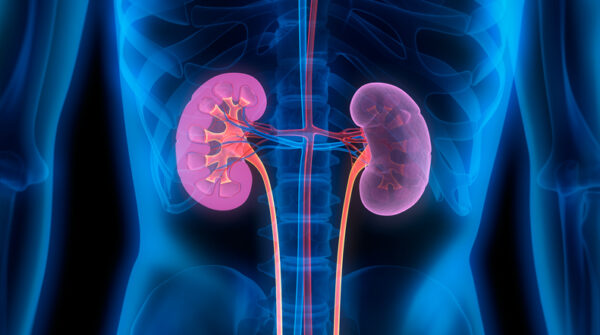
End stage kidney disease is a life-changing diagnosis, and among the many disruptions it brings is dialysis. The blood-cleansing process is complex, expensive, and time-consuming. It usually requires long rides to a clinic on a set schedule of three four-hour treatments every week. A growing number of patients, however, are opting to seize control of the process and bring dialysis into their own homes.
Home hemodialysis can improve patients’ length and quality of life, including the ability to maintain employment and enjoy meaningful time with family. Home hemodialysis also eliminates driving, rigid clinic schedules and contagious disease risk. But it does require a committed care partner – typically a spouse, relative or close friend of the patient – to help with treatment.
Although the prospect of being a home dialysis care partner can seem daunting and, frankly, a little frightening, the reality is that it can be empowering.
During in-clinic dialysis, spouses or other loved ones’ involvement in treatment is limited to seeing them off to treatment and then again four hours later. They don’t really know what their loved one has been through in the interim. Care partners likely see the patient exhausted, cramping, lightheaded, or nauseous after treatment. Having been excluded from the actual treatment, loved ones often feel disconnected and distant in the care of the patient. They worry about what’s happening to the patient during treatment and whether the side effects are normal. Care partners can feel helpless.
Building confidence in treatment
Dialysis at home can change this dynamic, but the responsibility can be daunting. The complexity of devices, managing alarms and events on dialysis, needling, and maintenance responsibilities can seem intimidating.
Fortunately, this fear of managing dialysis at home is waning with new technology that is user-friendly and simpler to use than early-generation home dialysis devices. Products designed for the lay user are simple, intuitive, and interactive, making them easy to master. Tablet-style touchscreens guide users through every step and every alarm.
Newer technology also uses tap water to generate dialysate on demand instead of dialysate that must be ordered and shipped or mixed over eight hours before use. Treatment set up is quicker and less technical, with fewer steps guided by text and animations on a mounted tablet connected by WiFi to one’s provider. In addition, these mobile systems have a modern look to make the technology more inviting to users and care partners and eliminate the look and feel of hospitalizing one’s home.
Moving dialysis to the home requires only a few days of training. First, a home dialysis nurse trains the patient on the new device; then the care partner joins, enabling the patient to help with training. The goal is to create a healthy partnership between caregiver and patient. When home dialysis is done right, care partners quickly discover they are becoming an integral part of the process as engaged, informed participants rather than uninformed outside observers. By knowing more, care partners can worry a lot less.
Experience speaks
In a recent study of 50 home hemodialysis care partners using new technology, the overwhelming majority reported feeling “confident in supporting my partner’s dialysis treatment” after training. In addition, with respect to how it impacted their own health and wellbeing, all of them reported only occasionally, rarely or never “feeling that I’ve lost control of my life since my relative’s sickness” and “feeling stressed between caring for my relative and meeting my own responsibilities.”
Stronger relationships and freedom
Beyond instilling confidence in both the patient and the caretaker, home hemodialysis can strengthen relationships by giving the participants more quality time together. A home dialysis session is typically three hours long, the perfect duration to take in a movie together or binge watch several episodes of a TV series.
Newer technology also offers more freedom for patients to travel. Rather than trying to fly with a 75-pound piece of equipment plus supplies with older home hemodialysis systems – patients can now simply carry a USB stick containing their critical data and visit a clinic equipped with the newer technology. As usual, they will perform the dialysis themselves with staff available to assist, then get back to their adventure.
Professional support is a key success factor in home dialysis. Nurses and technicians check in with patients regularly and provide staff support 24/7. There are also online and offline home hemodialysis communities on Facebook and elsewhere.
Home hemodialysis is part of the larger trend to move health care to the home to improve outcomes and quality of life while reducing costs. It’s also part of the movement to improve care in rural communities. Through home dialysis and remote data transmission, patients in rural areas can eliminate the need to travel long distances to urban centers three times a week for treatment.
While kidney disease is a life changer, home dialysis can temper the disruption. With the help of new technology, care partners can now confidently play a major role in maintaining their loved one’s quality of life – as well as their own.
Photo: peterschreiber.media, Getty Images
Michael Aragon, MD is Chief Medical Officer at Outset Medical, a medical technology company pioneering a first-of-its-kind technology to reduce the cost and complexity of dialysis. Outset is the developer of The Tablo® Hemodialysis System, FDA cleared for use from the hospital to the home, and represents a significant technological advancement that transforms the dialysis experience for patients and operationally simplifies it for providers.
He is board certified in Internal Medicine and Nephrology, receiving his training at the University of Texas Health Sciences Center in Houston. His clinical research focus has been on the expansion and improvement of home dialysis options for patients with renal disease.
This post appears through the MedCity Influencers program. Anyone can publish their perspective on business and innovation in healthcare on MedCity News through MedCity Influencers. Click here to find out how.










